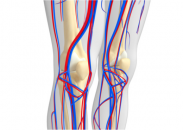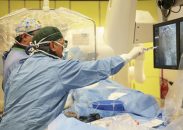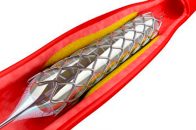This big analysis shows rapid absorption of paclitaxel coated devices for PCI in femoropopliteal territory, which reassures us about its alleged association to increased mortality. In fact, survival, amputation-free survival and cardiovascular events rate resulted better with paclitaxel coated devices in the treatment of chronic limb ischemia. This study emphasizes the difference that might exist…
Drug-Coated Balloons vs. Conventional Angioplasty Below the Knee
This meta-analysis is an update on the role of drug-coated balloons in the treatment of infrapopliteal arterial disease, a difficult pathology for all strategies. The primary endpoint of this meta-analysis was treated lower limb salvage at 12 months. The secondary endpoints included survival at 12 months, amputation free survival, restenosis, and target lesion repeat revascularization rate. This…
Angioplasty in Long Femoropopliteal Lesions Offers Reasonable Results
Courtesy of Dr. Carlos Fava. Around half the treated lesions in peripheral disease are femoropopliteal lesions. Long lesions are among the challenges faced: they are associated with higher mortality and morbidity, and revascularization in that setting always entails some degree of difficulty. Nowadays, with the development of nitinol stents and more operator experience, angioplasty is becoming…
Consensus on How to Conduct Follow-Up in Peripheral Vascular Disease
Peripheral vascular disease involves multiple areas and, therefore, can have very different presentations (from complete lack of symptoms to disabling symptoms). Depending on clinical presentation, general condition, anatomical localization, and lesion extension, revascularization can be indicated alongside optimal medical treatment. In 2017, guidelines with indications for revascularization were published; however, maintaining long-term patency can be…
Safety of Paclitaxel-Coated Balloons in Peripheral Vascular Disease
Everybody keeps wondering whether drug-coated balloons can actually increase mortality. If that is the case, there is an even harder question in need of an answer: what would be the physiopathology for such increase in mortality? As a lukewarm message, the US Food and Drug Administration recommended a special informed consent form when these devices…
Should We Start Using the Retrograte Access in Critical Limb Ischemia?
Courtesy of Dr. Carlos Fava. Peripheral vascular disease in lower limbs is on the rise. Antegrade recanalization is associated with amputation and death, and therefore contraindicated. For a while we have been using the retrograde access when classic revascularization is not possible. Even though there is evidence in favor of this access, it is just…
The Real Impact of Peripheral Artery Disease in TAVR
Courtesy of Dr. Carlos Fava. The real incidence of peripheral artery (PAD) disease in TAVR remains unclear. Different reports still estimate it is between 10 and 46%, but they have shown it has a negative impact in evolution. 51,685 TAVR patients were analyzed. 12,740 of these patients presented PAD (24.6%). PAD patients tended to be…
Drug-Eluting Stents vs. Balloons While Paclitaxel Is in the Eye of the Storm
Even after the US Food and Drug Administration (FDA) issued an alert on paclitaxel devices in patients with femoropopliteal artery disease, which caused the interruption of a few ongoing studies, reality indicates that the efficacy of these devices has been proven and that they are still used. The increased mortality observed in the meta-analysis that…
Surveillance after EVAR: When and How Long
It has been suggested that surveillance after endovascular abdominal aorta aneurysm repair (EVAR) should be for life, seeing as on one hand we are not sure how long these devices last (and they keep coming out), and on the other hand, there could be late complications, such as type 2 leaks. This is why the…
Safety in Abdominal Aortic Aneurysm Surveillance Programs
Abdominal Aortic Aneurysm (AAA) rupture rate in the UK justifies the current surveillance programs and bring ease to some physicians that at some point have cast a shadow on their efficacy. This study also endorses reference thresholds to intervene patients. In 2009, the UK National Health Service (NHS) implemented a AAA national surveillance scheme where…






